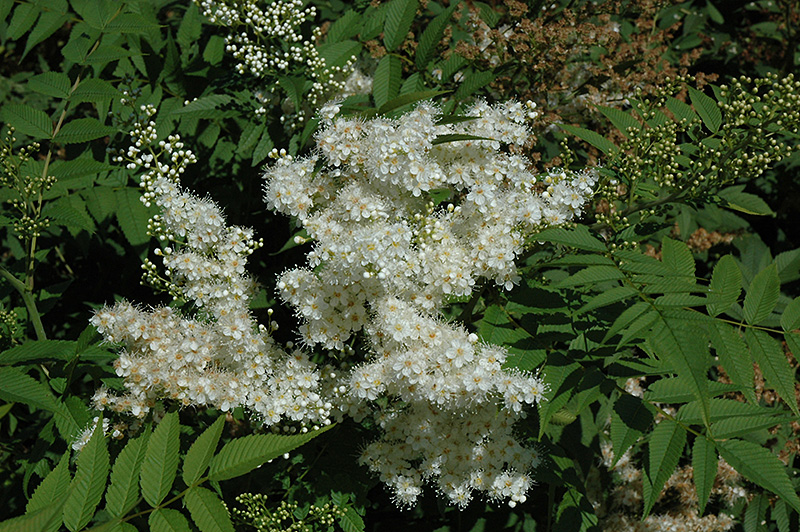Height: 8 feet
Spread: 6 feet
Sunlight:
![]()
![]()
Hardiness Zone: 2b
Other Names: Ural False Spirea, Ash Leaf Spirea
Description:
A large, upright shrub with ferny ash-like leaves and bold plumes of creamy white flowers in summer, suckers and spreads to form dense thickets, best for naturalizing or filling in a large area of the yard, quite impressive in bloom
Ornamental Features
Aurora False Spirea features airy plumes of white flowers rising above the foliage from early to mid summer. It has dark green deciduous foliage which emerges burgundy in spring. The pinnately compound leaves do not develop any appreciable fall colour.
Landscape Attributes
Aurora False Spirea is a dense multi-stemmed deciduous shrub with an upright spreading habit of growth. Its relatively coarse texture can be used to stand it apart from other landscape plants with finer foliage.
This is a high maintenance shrub that will require regular care and upkeep, and is best pruned in late winter once the threat of extreme cold has passed. Gardeners should be aware of the following characteristic(s) that may warrant special consideration;
- Suckering
Aurora False Spirea is recommended for the following landscape applications;
- Mass Planting
- Groundcover
- Naturalizing And Woodland Gardens
Planting & Growing
Aurora False Spirea will grow to be about 8 feet tall at maturity, with a spread of 6 feet. It tends to be a little leggy, with a typical clearance of 1 foot from the ground, and is suitable for planting under power lines. It grows at a fast rate, and under ideal conditions can be expected to live for approximately 20 years.
This shrub does best in full sun to partial shade. It prefers to grow in average to moist conditions, and shouldn't be allowed to dry out. It is not particular as to soil type or pH. It is somewhat tolerant of urban pollution. This particular variety is an interspecific hybrid.

